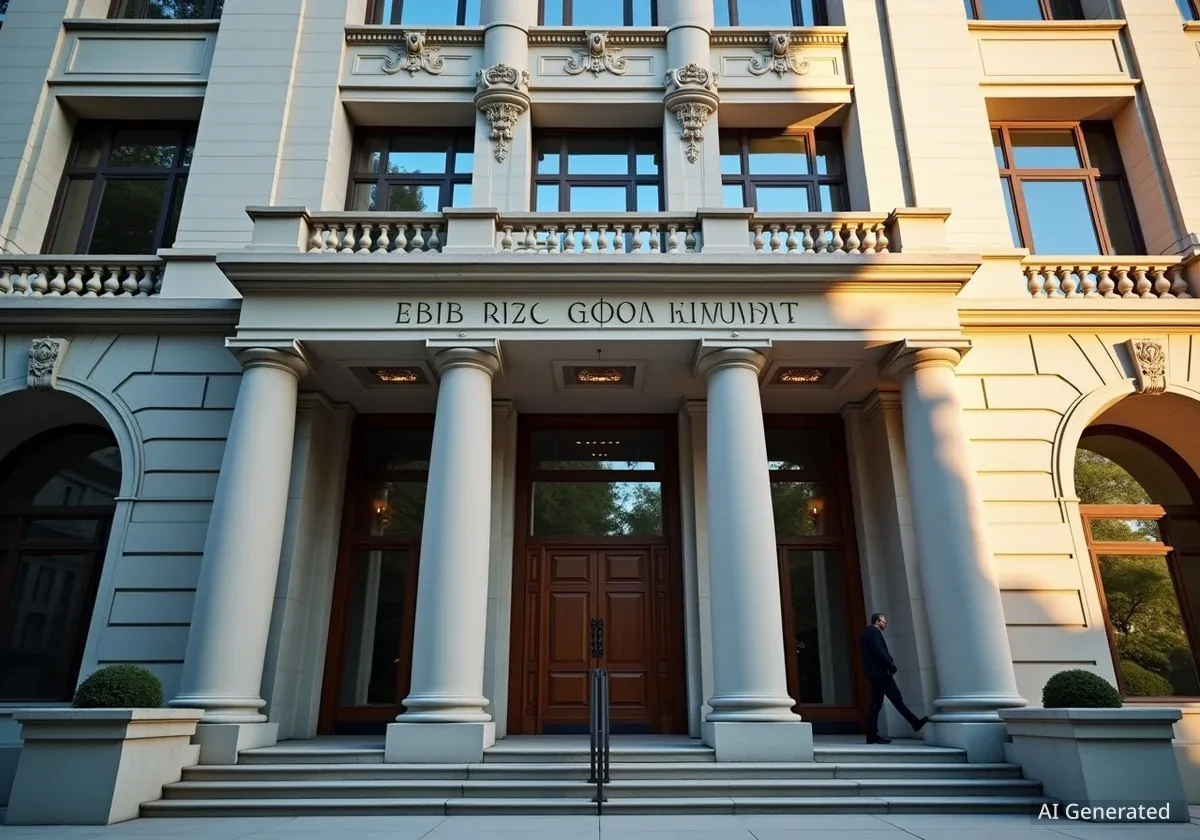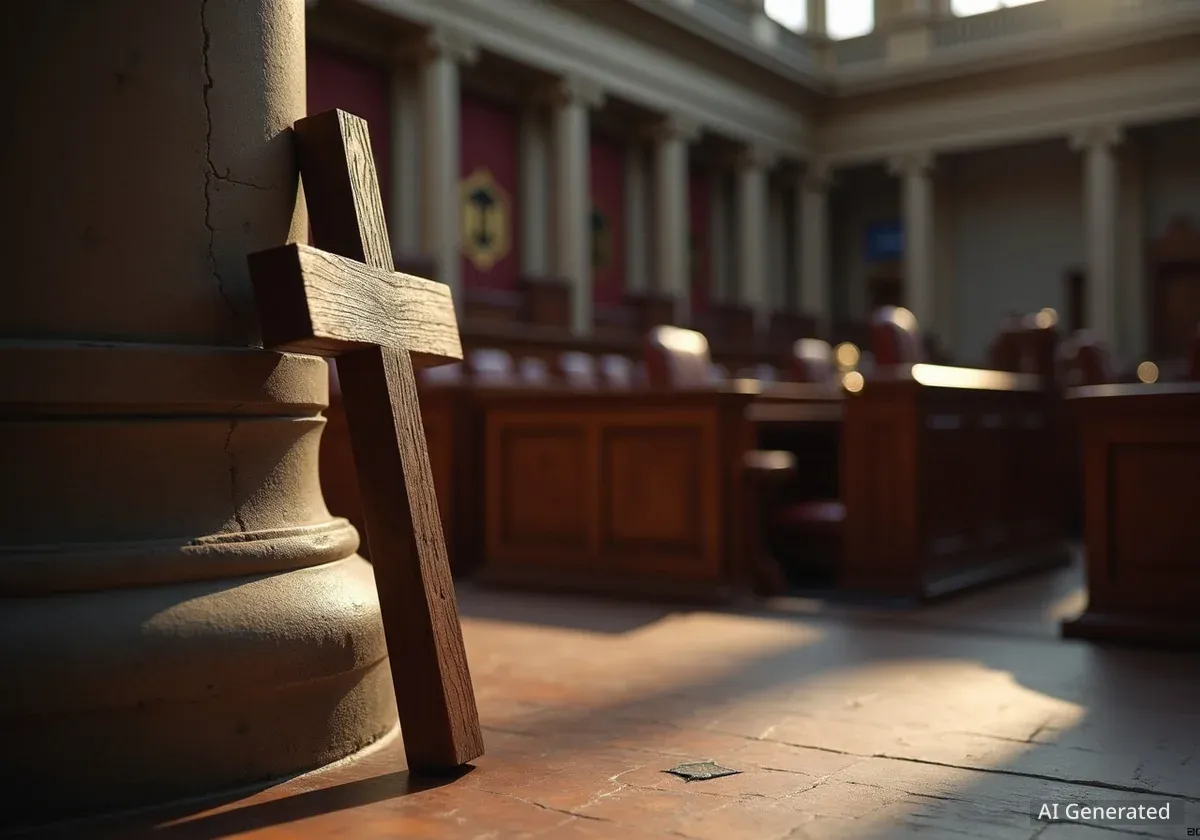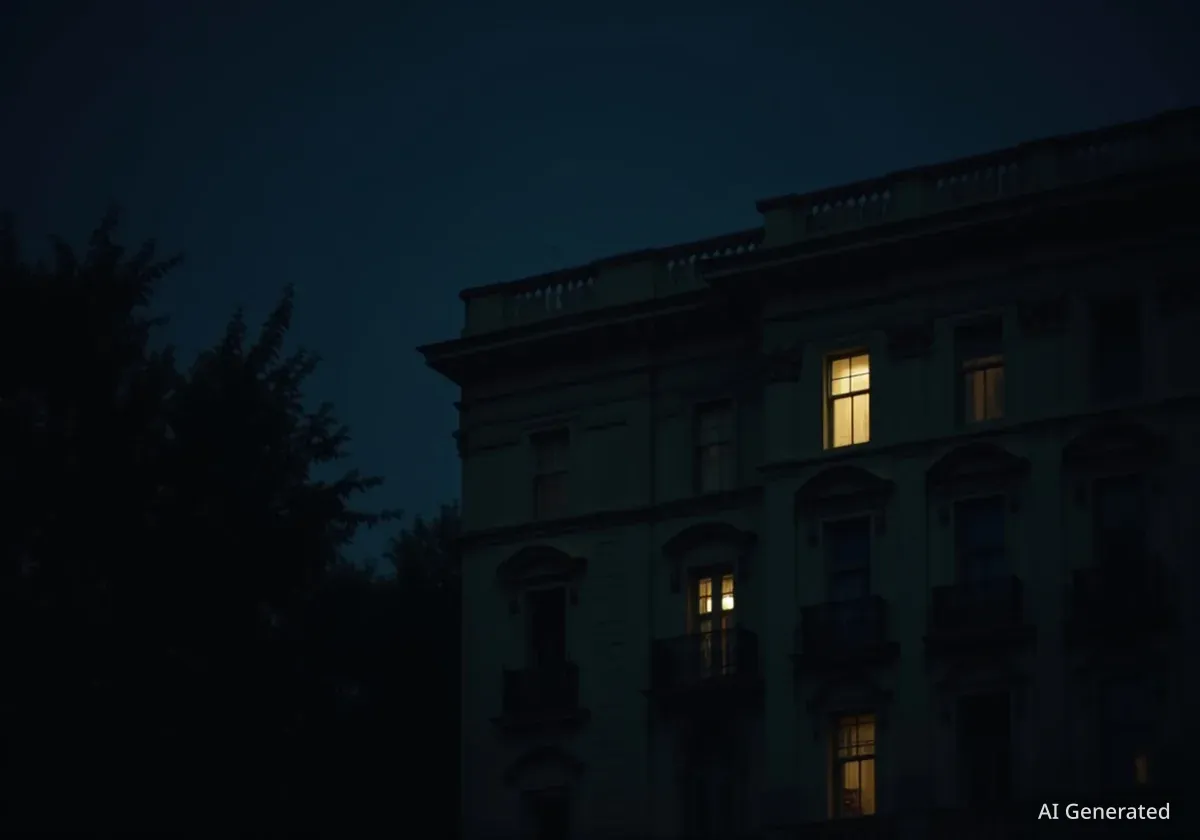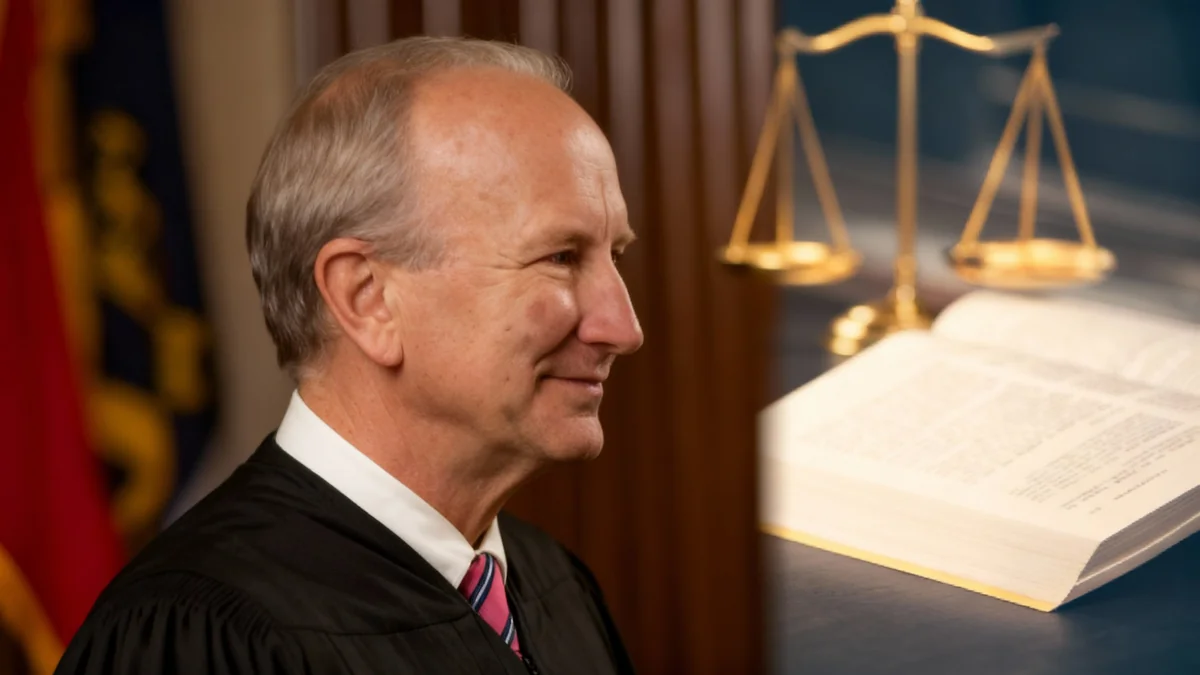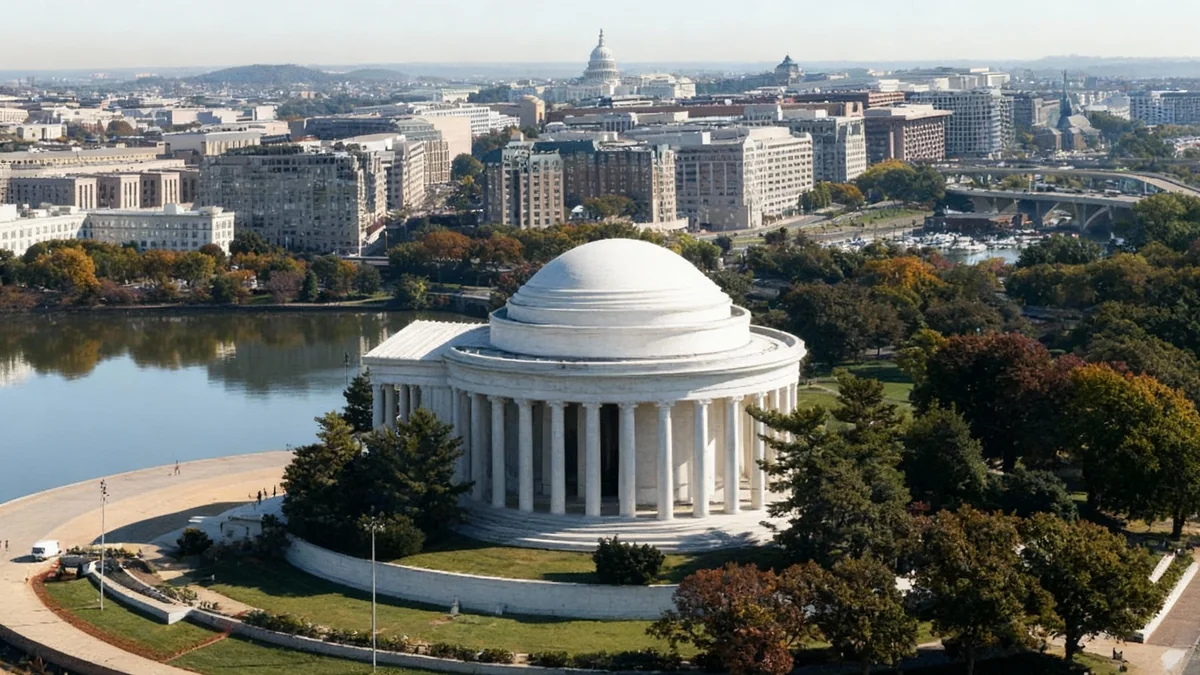Two United States senators have reintroduced legislation aimed at preventing mandated architectural styles for federal buildings. This move challenges previous executive orders that favored traditional and classical designs. The proposed bill seeks to ensure that design choices for federal structures are made at the local level, reflecting the diverse needs and aesthetics of communities across the nation.
Key Takeaways
- Senators Chris Van Hollen and Ben Ray Luján introduced the Democracy in Design Act (DDA).
- The DDA aims to codify long-standing principles that allow local control over federal building design.
- This legislation counters previous executive orders mandating traditional and classical architecture.
- A opposing bill, the Beautifying Federal Civic Architecture Act, is also being prepared to codify the traditional design preference.
- The American Institute of Architects (AIA) supports the DDA, while the National Civic Art Society backs the traditional mandate.
New Legislation Supports Local Design Choices
Senators Chris Van Hollen of Maryland and Ben Ray Luján of New Mexico, both Democrats, recently presented the Democracy in Design Act (DDA) to the Senate. This bill is similar to legislation first proposed in the House of Representatives in 2020 by Congresswoman Dina Titus. The original House bill was intended to oppose executive orders from a previous presidential administration that promoted classical architecture for federal buildings.
While those pro-classical orders were rescinded in 2021, they were reinstated in January. This reinstatement has given new importance to the legislative efforts. The reintroduction of the DDA in the Senate indicates a broader interest in the initiative. However, for the bill to become law, it must pass through both the House and Senate in an identical form. The legislative process is currently in its initial stages.
Fact: Guiding Principles
The Democracy in Design Act (DDA) aims to codify the Guiding Principles for Federal Architecture. These principles have been in place since the 1960s. They delegate decisions about architectural design to local authorities, allowing federal buildings to better integrate with their surroundings and serve community needs.
Countering Mandated Architectural Styles
The DDA directly challenges an executive order that designates "traditional and classical" styles as mandatory for federal buildings. Instead, the DDA would formalize the Guiding Principles for Federal Architecture. These principles have been a cornerstone of federal design policy for decades, giving local communities a say in the appearance of government structures built within their areas.
Senator Van Hollen emphasized the importance of local input in a recent press release.
"There should not be a one-size-fits-all mandate for the design of federal architecture. This legislation will help ensure that federal buildings reflect the diversity of our nation and the American people, and meet the needs of the communities they serve," said Senator Van Hollen.
The executive order mandating traditional and classical styles was issued after an eight-month review process. This process was initiated by the "Promoting Beautiful Federal Civic Architecture" order on the first day of the current administration's second term in January.
Background: Executive Orders and Architecture
For several years, there has been a debate about the architectural style of federal buildings in the United States. One view favors traditional and classical designs, seeing them as symbols of national heritage. Another view supports modern designs and local control, arguing that buildings should reflect contemporary times and community preferences. This legislative effort is the latest development in this ongoing discussion.
Architectural Community Responds
The American Institute of Architects (AIA) has consistently opposed executive orders that dictate architectural styles. The AIA has expressed strong support for the reintroduction of the Democracy in Design Act.
AIA president Evelyn Lee praised the senators, commending their "leadership in preserving democratic values in the design process."
The AIA's stance highlights a belief that design freedom and local input are crucial for creating federal buildings that are both functional and meaningful to their communities. They advocate for a process that allows for a variety of styles and approaches, rather than a single mandated aesthetic.
Opposing Legislation Emerges
Shortly after the DDA's reintroduction, a counter-effort was announced. Republican Senator Jim Banks from Indiana, along with Justin Shubow, president of the National Civic Art Society, published an opinion piece. In it, they announced an upcoming bill called the Beautifying Federal Civic Architecture Act. This bill aims to codify the executive orders that favor traditional and classical architectural styles.
Shubow and Banks' article criticized modernist buildings, describing some as resembling "bizarre art projects." They specifically mentioned Thom Mayne's Nancy Pelosi San Francisco Federal Building as an example. They argued for a renewed focus on public input, which they claimed was not a prior requirement, to ensure buildings represent "Western values."
Preference for Classical Styles
While the proposed Beautifying Federal Civic Architecture Act would not mandate specific designs, it would "require a preference" for classical styles. This preference would encompass a range of architectural traditions, including neoclassical, Art Deco, Romanesque, and Pueblo Revival.
"My legislation doesn't mandate any specific style for buildings across the country – it only requires a preference for classical and traditional architecture designs, which include everything from neoclassical to art deco to Romanesque to Pueblo revival," stated Banks and Shubow.
This requirement is directly linked to expressing what Banks and Shubow refer to as "Western values." Justin Shubow has been a vocal supporter of focusing on classical and traditional architecture. Earlier this year, he noted that the number of affected building projects would be relatively small but symbolically significant.
- Neoclassical: Characterized by grandeur, symmetry, and classical elements like columns and domes.
- Art Deco: Known for its geometric patterns, rich colors, and lavish ornamentation.
- Romanesque: Features thick walls, round arches, large towers, and decorative arcading.
- Pueblo Revival: Inspired by the traditional adobe architecture of Pueblo Native Americans, with rounded corners and flat roofs.
Ongoing Efforts to Shape Design Policy
The debate over federal building design is part of a broader effort to influence architectural policy in the United States. Previous administrations have issued several executive orders aimed at shaping design. These include the recent formation of a National Design Studio. Additionally, reports indicate that a new ballroom wing is being planned for the White House, further illustrating ongoing architectural projects at the highest levels of government.
The Robert C. Weaver Federal Building in Washington D.C., designed by Marcel Breuer, stands as an example of modernist architecture. Its presence in the federal landscape highlights the diverse architectural history of government buildings and the ongoing discussion about future design directions.
